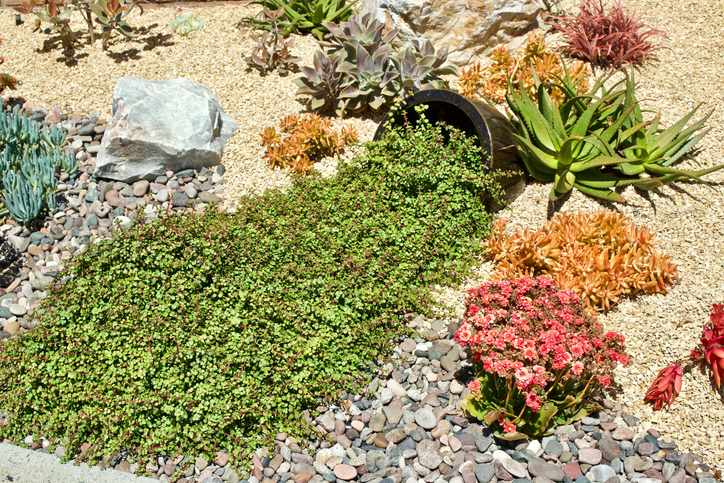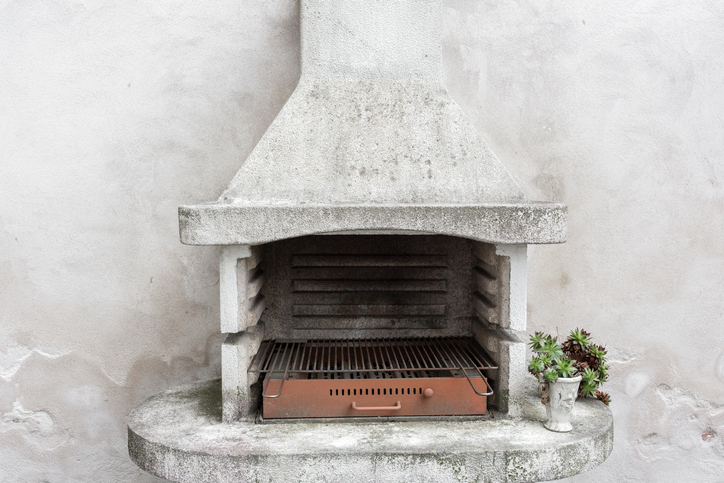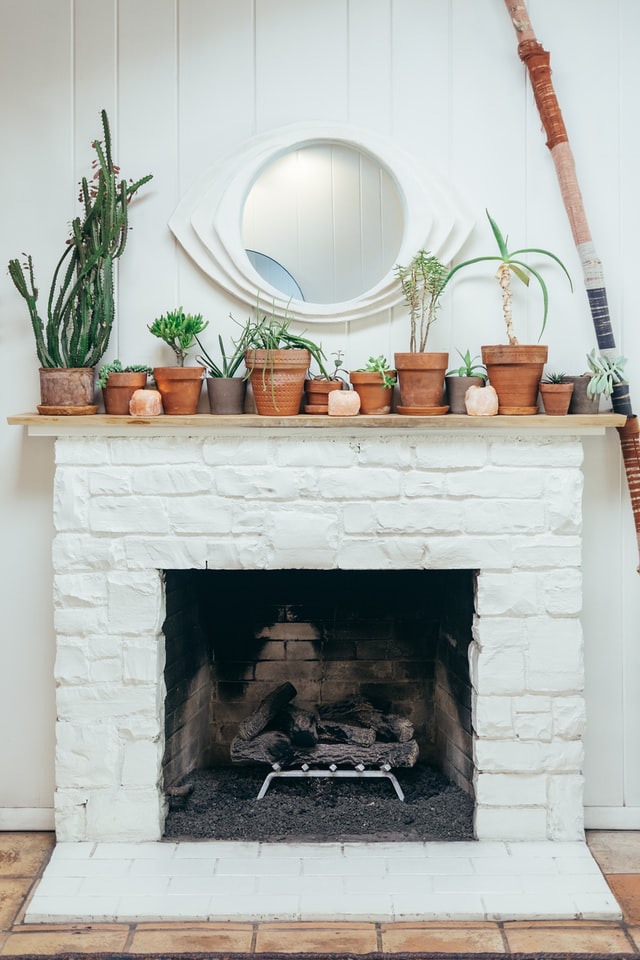Forget the AstroTurf – xeriscaping is gaining popularity as a way to have a beautiful garden without the maintenance and expense of traditional landscaping. Most landscaping methods use up a lot of extra resources, but the beauty of xeriscaping is that it’s sustainable well into the future. A stunning xeriscape garden will not only turn heads — it’ll save you water, money, and time. Read on to learn more about this low-maintenance approach to gardening.
What is Xeriscaping?
Xeriscaping is landscaping that focuses on hot, dry climates where very little water, or irrigation, is available — but it can be done anywhere. Xeriscaping involves the cultivation of “xerophytes,” which are slow-growing plants that thrive without much water. Cacti and succulents are the most well-known xerophytes, but there are plenty of these hardy plants to choose from.
Benefits of a Xeric Garden
Whether you live in the high desert or you’re just looking to cut back on your water bill, here are some of the biggest benefits to having a xeric garden.
It’s better for the environment. Xeriscapes are a great way to do your part in off-setting climate change. Xeriscaping reduces pollution by eliminating the need for pesticides, fertilizers, and excess mowing. Many xerophytes even attract endangered pollinators into your garden.
You’ll use less water. This is perhaps the biggest benefit to having a water-wise garden. Water conservation is incredibly important, and traditional gardening methods are notorious for using up tons of water. Choosing plants that are hardy and drought-resistant will significantly cut down on your water bill and help conserve our precious water supply.
It’s easy to maintain. A drought-resistant garden is loved for its ease of care. Xeriscapes require less water, which means less time spent outside with the hose. Xerophytes also tend to grow more slowly than other plants, which means pruning and trimming are only rarely necessary.
Planning Your Xeric Garden
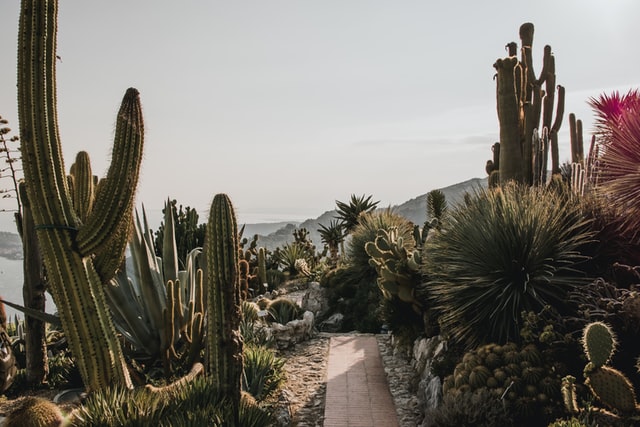
If you’re ready to start planning out your xeric garden, you’ve come to the right place. You don’t have to completely redo your lawn in order to have a xeriscape — nor is it necessary to live in an arid climate. Xeriscaping can work anywhere and with whatever amount of space you’ve got. Here’s what to keep in mind.
Drought-resistant vs. drought-tolerant plants. These may sound interchangeable, but there’s quite a big difference between drought-resistant plants and drought-tolerant plants. Drought-resistant plants, such as cacti, are able to survive in a near-constant state of drought. Drought-tolerant landscaping is hardy enough to survive periods of drought, but they do require some water in order to live.
The best location. Consider how you want to use your yard, and don’t get overwhelmed by thinking you need to tear up your whole lawn. Which parts of your lawn are used the least? These areas are prime candidates for growing a few water-wise plants.
Plan water zones. Plan your garden so that the plants are grouped together by how thirsty they are. This reduces maintenance and cuts down on how much water you use.
- Zone One (Oasis Zone): The oasis zone has the most water-dependent plants and requires more maintenance than other zones.
- Zone Two (Transition Zone): The transition zone requires less watering and maintenance than the oasis zone but has more needs than the xeric zone.
- Zone Three (Xeric Zone): The xeric zone requires very little water and maintenance.
Remove the lawn. So you’re planning on converting your entire lawn into a xeriscape? Wonderful! You’ll need to start by replacing the grass with either mulch, rocks, gravel, or a combination of the three. These materials are great for stopping weeds, preventing water evaporation, and reducing overall maintenance.
Choose region-appropriate plants. Part of what makes xeriscaping so environmentally friendly is the use of native plants. Start by finding out which plants are indigenous to your region, then check how drought-resistant those plants are. Native plants require the least care and are sure to thrive in your area.
Irrigation considerations. If you’re just starting out with a xeric garden, you might have to put in a little more effort in the beginning to get your garden going and growing. Many newly planted xerophytes require regular watering for the first few months while they get established in the soil. Consider installing a drip irrigation system, which is an efficient way to get water directly to your desert plants with very little water loss along the way.
Test your soil. A xeriscaped garden doesn’t need much, but what it does need is good soil. Good soil holds water well, provides nutrients, and has proper aeration that allows water to reach deep roots. If you’re unsure of your soil quality, get it tested before moving forward with your xeriscape garden.
Maintaining Your Xeriscape

Keep your xeriscape garden strong with these maintenance tips:
Mulch, and keep it mulched. Mulch helps retain soil moisture, slow down moisture evaporation, prevent roots from overheating, and stops weeds from growing. Choose an organic mulch like pine straw or pine bark, because they’re good at retaining moisture and provide extra nutrients to your plants.
Mow properly. If you still have grass that needs mowing, never cut more than one-third of it at a time and always leave the clippings on the lawn to return nutrients to the soil and encourage growth.
Weed regularly. Weeds act as little thieves, stealing vital nutrients and water from your plants. Clip them regularly to keep your garden healthy.
Fertilize yearly. Fertilize your garden with compost or an organic fertilizer to boost nutrients and improve soil texture.
Prune each winter. Pruning helps your plants grow. Prune them in the winter while they’re dormant before the weather gets hot again. Be careful not to overdo it, though, as excessive pruning can harm your plants.
The Best Drought-Tolerant Plants
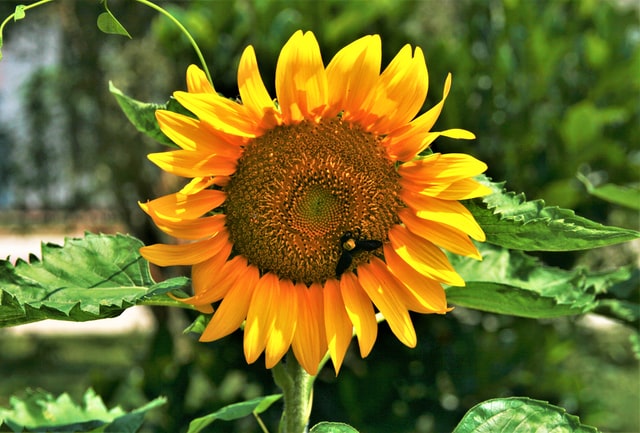
Not all plants are suitable for arid climates. If you’re having trouble finding plants for your desert garden, look no further. We’ve gathered a few of the best — and most beautiful — plants for xeric landscaping.
Agave. Agave is a hardy succulent that actually does best with a little neglect, making it the perfect candidate for xeric gardens. They’re known for long leaves that form in rosettes – certain agave can even grow to be taller than humans. Once established, agave plants will flower with cup-shaped blooms during the growing season then die, leaving behind off-shoots, or ‘pups’. These plants love full sun and gritty soil that drains well.
Aloe. Aloe thrives in hot, dry climates. Most people are familiar with the medicinal aloe vera but there are over 400 species of this flowering succulent that look beautiful in xeriscaped gardens. Aloe only needs to be watered about once every other week during the summer and hardly at all in the winter.
Cactus. Cacti are the most popular, and probably most well-known, choice for xeriscaping. These spiky plants are well-suited to arid climates and have a drought-tolerance that’s the stuff of legend. There are nearly 2,000 species of cacti – from ball cactus to prickly pear and of course the famous saguaro. There are plenty of options to choose from when outfitting your water-wise garden.
Coneflowers (Echinacea). Coneflowers, also called Echinacea, have gorgeous purple-pink blooms that attract butterflies, birds, and bees to your xeric garden. Echinacea is a native perennial and boasts extreme heat and drought resistance. These carefree plants are easy to grow, bloom for months, and make for delightful cuttings.
Fountain grass (Pennisetum setaceum ‘Rubrum’). Fountain grass is a bushy plant that adds an airy elegance to desert gardens. With their burgundy leaves and feathery blooms that spring above the foliage during growing season, these ornamental grasses are true show-stoppers. Fountain grass does well in dry climates but really thrives with regular watering, especially if your area hasn’t seen rain for a few weeks.
Geranium (Pelargonium spp.). Sun-loving geraniums come in white, purple, or brilliant red blooms. Geraniums are a tough, long-living plant that can thrive for decades in arid climates. Blooming season happens from early spring to late fall for these low-growing, mound-forming plants. Certain varieties have leaves that will take on lovely purple to scarlet hues during the winter months, adding interest to dormant gardens.
Lavender (Lavandula spp.) Ah, luscious lavender — the sweet-smelling queen of xeriscaped gardens. Tall, purple flowers with silver-green foliage add a pop of color and fragrance to desert landscapes. Native to the Mediterranean, lavender has evolved to be quite drought-resistant and only needs to be watered when the first few inches of soil feel dry. Regularly pinching off spent blooms promotes growth during the flowering season.
Desert Rose (Adenium Obesum). These slow-growing plants have a thick, succulent stem and vivid, hot pink flowers. Desert Rose likes lots of sun and consistent watering — the soil should always be moist but never fully saturated. Desert Rose blooms during the summer and goes dormant for the winter but should be kept in warm temperatures at all times.
Succulent plants. Succulents retain water like a champ, making them an excellent choice for sustainable gardens. They thrive in dry climates and add a ton of color and diversity to xeriscapes with their plump leaves and bright flowers. There are over 1,000 varieties of succulents available for xeriscape gardens.
Sunflowers (Helianthus). Giant and willowy, short and slender, purple, yellow, or red — there are tons of options to choose from when picking sunflowers for your xeriscape garden. Sunflowers are famous for their drought-tolerance and adored for their beauty. They require a little extra care while their root systems develop, but once they’re fully established, these stunning plants are able to withstand long periods of drought and heat.
If you’re looking for a more sustainable way to garden, consider switching over to the singular beauty of xeriscaping. Give Mother Nature — and yourself — a break by filling your garden with water-wise desert plants that cut down on maintenance and water usage. You can even create a balanced garden by combining hardscaping and softscaping elements to it.
